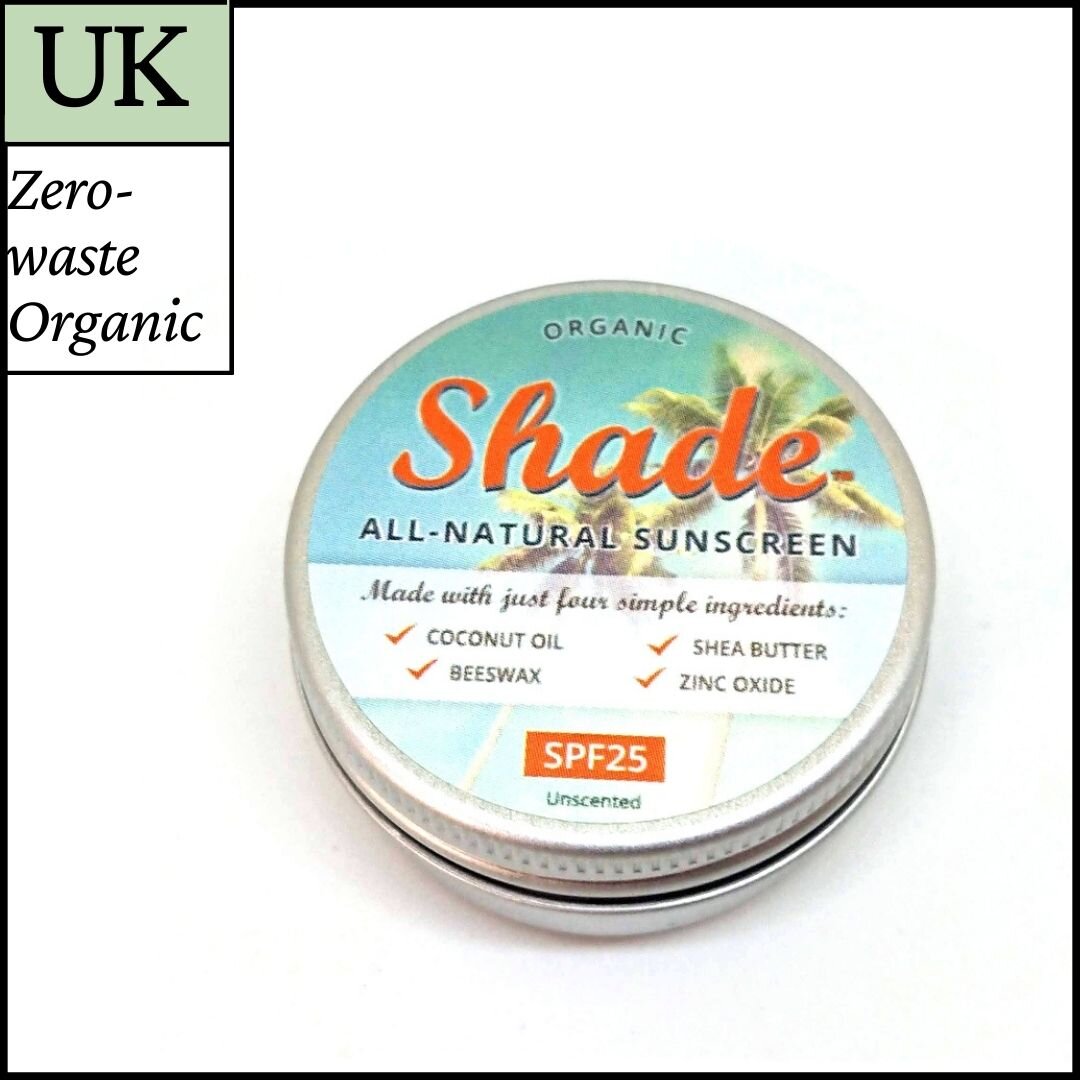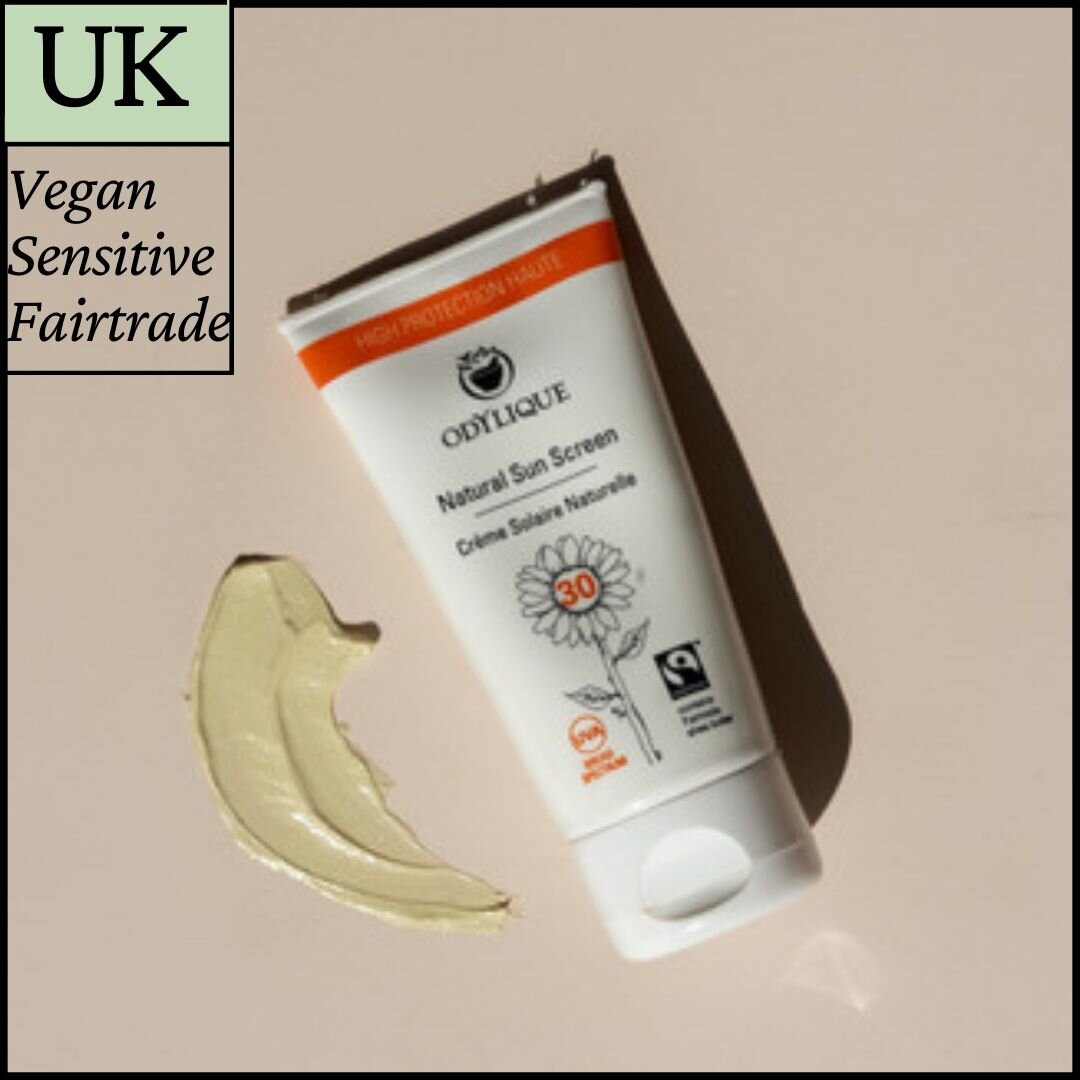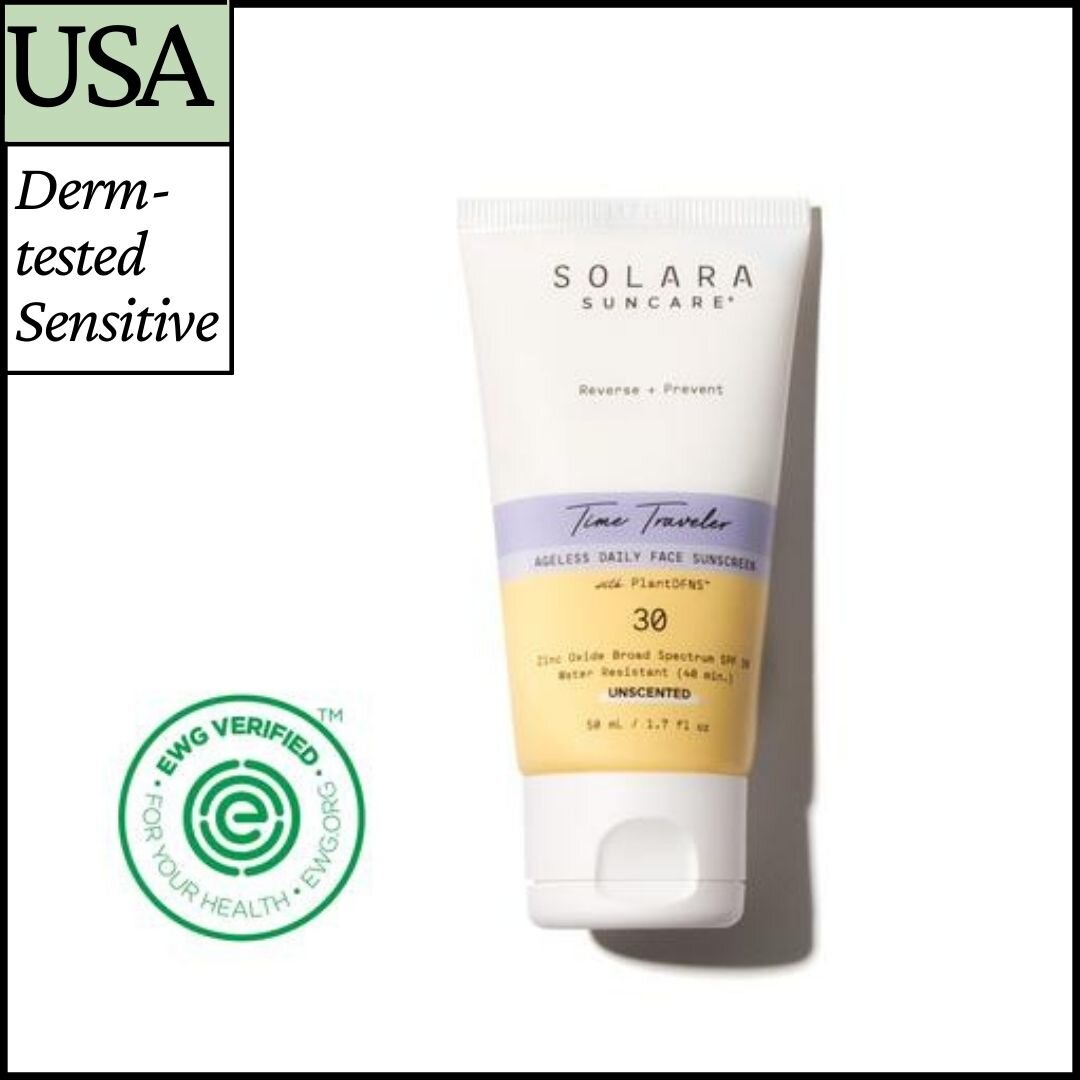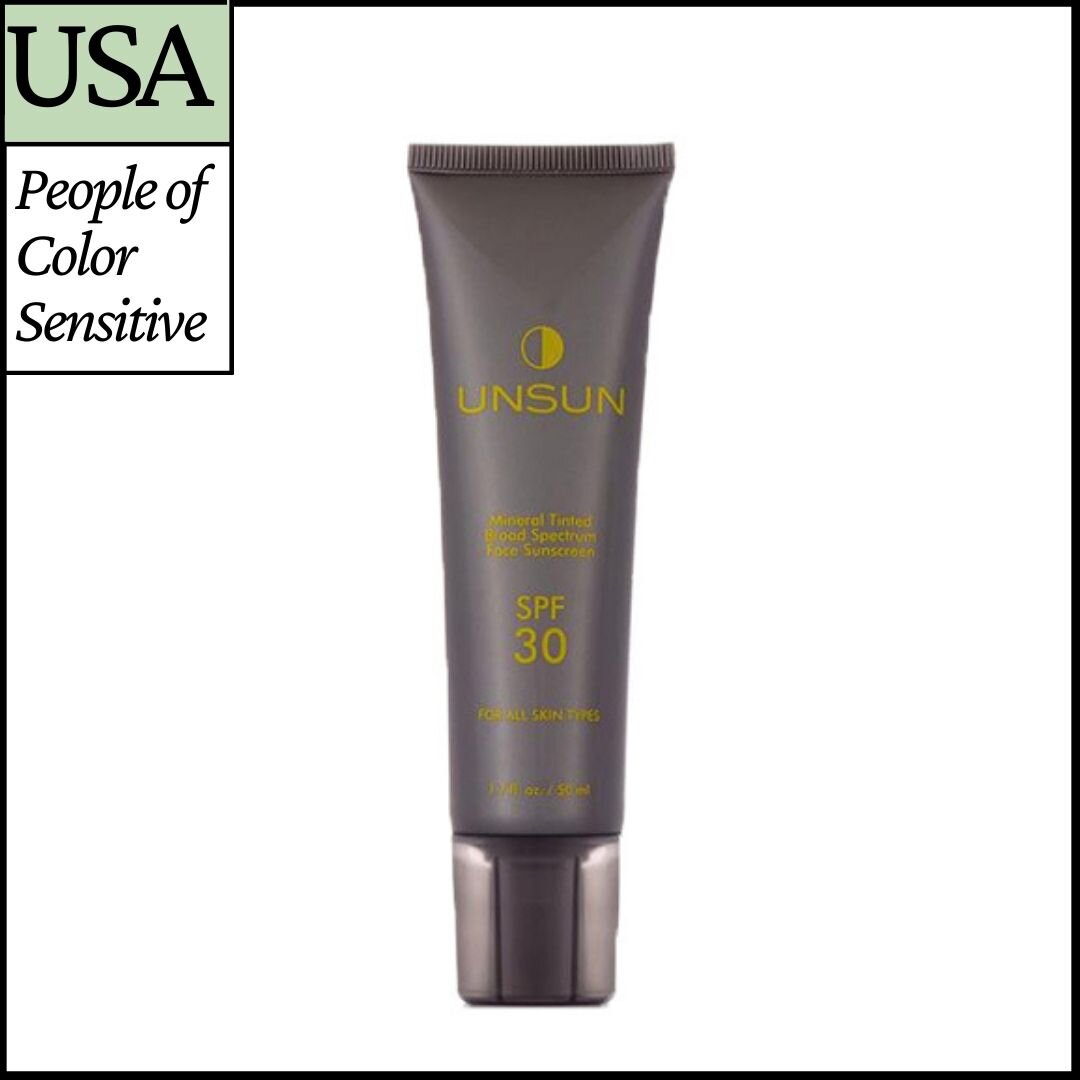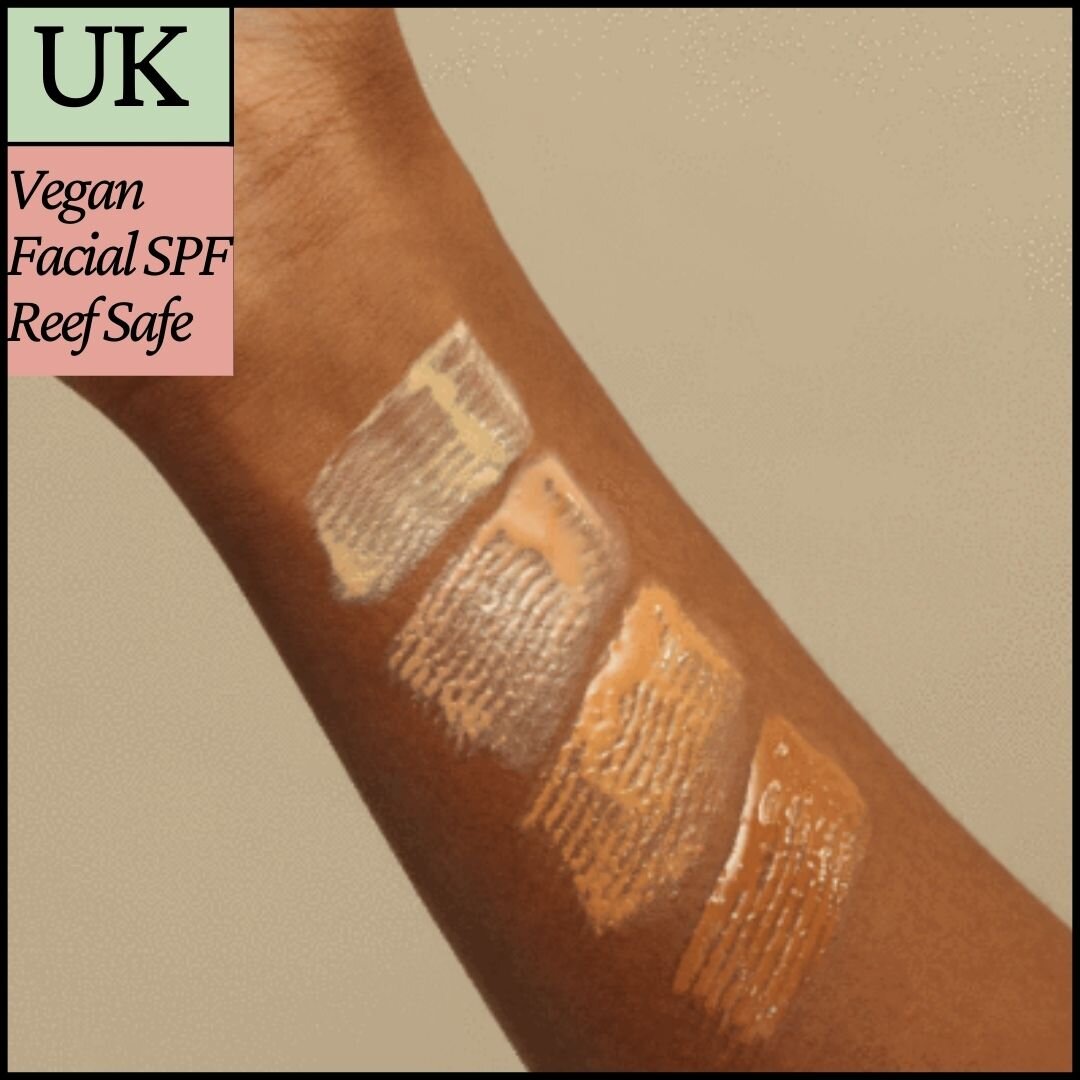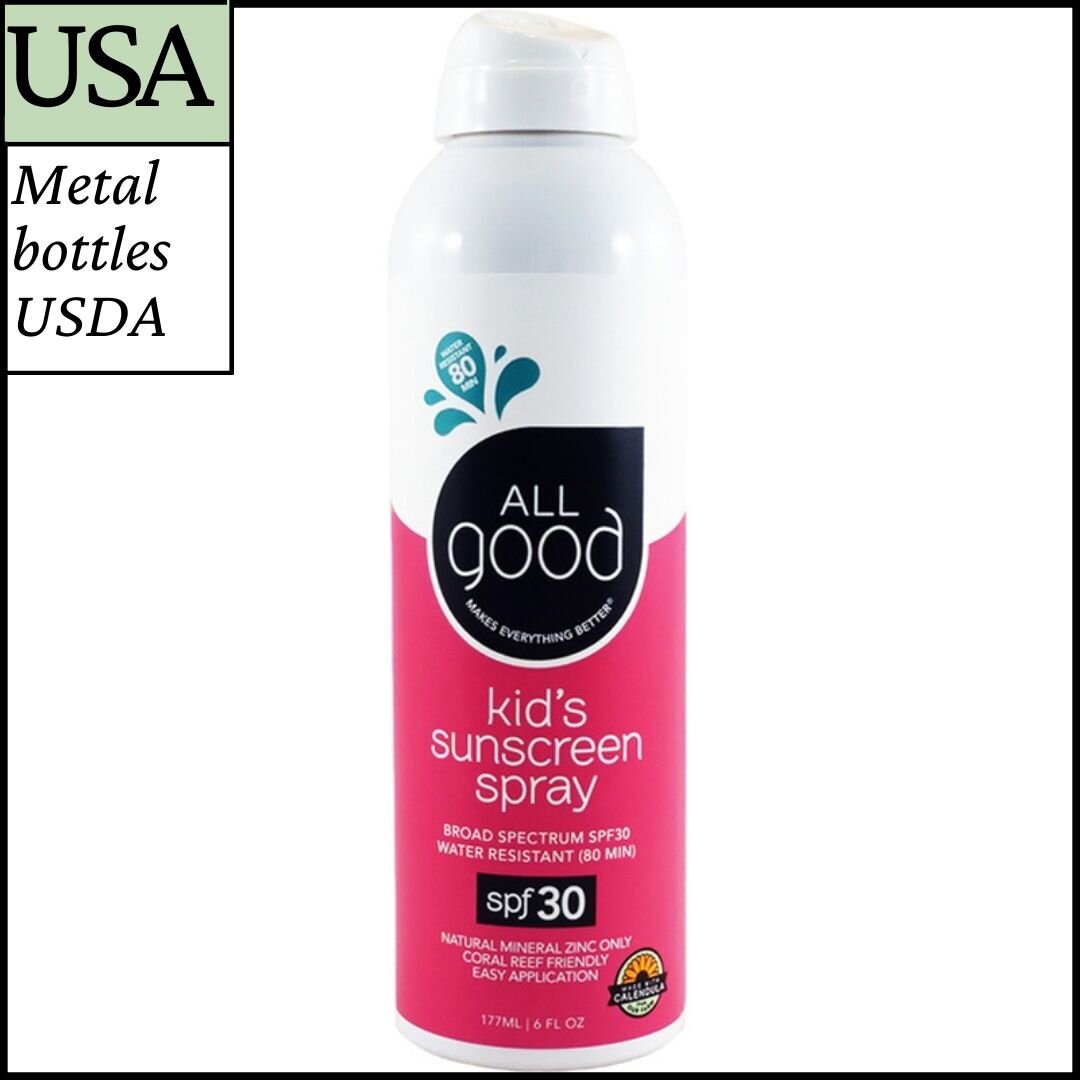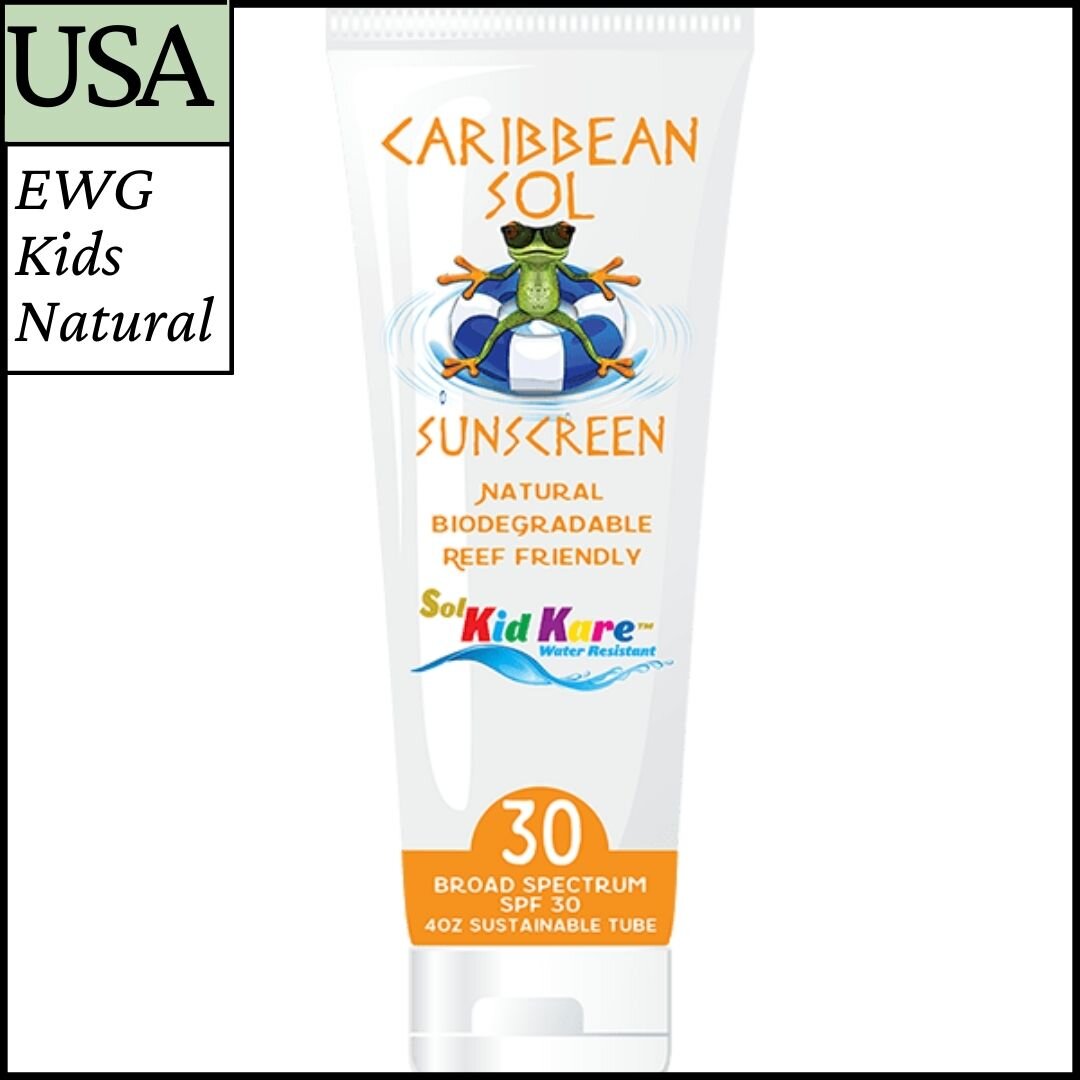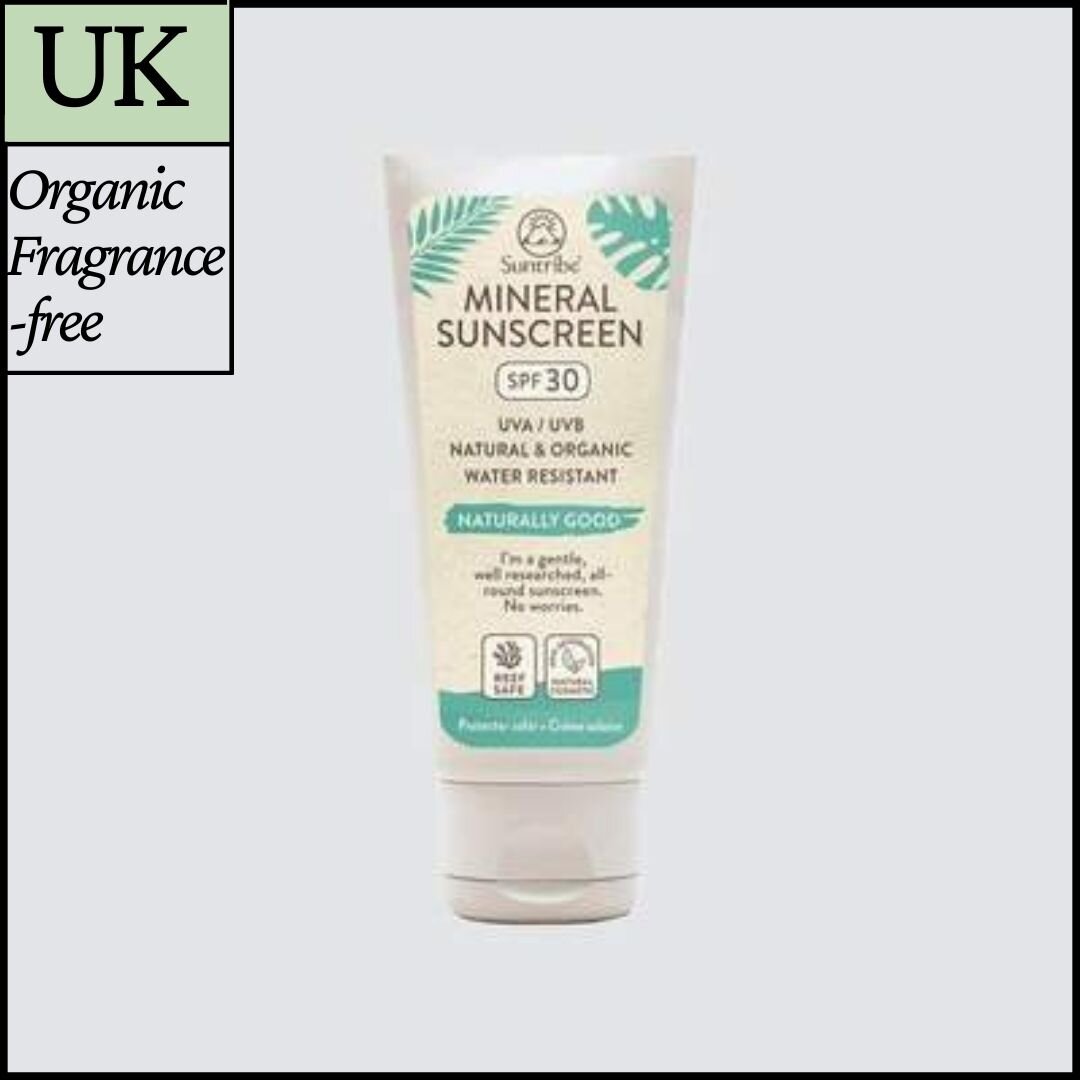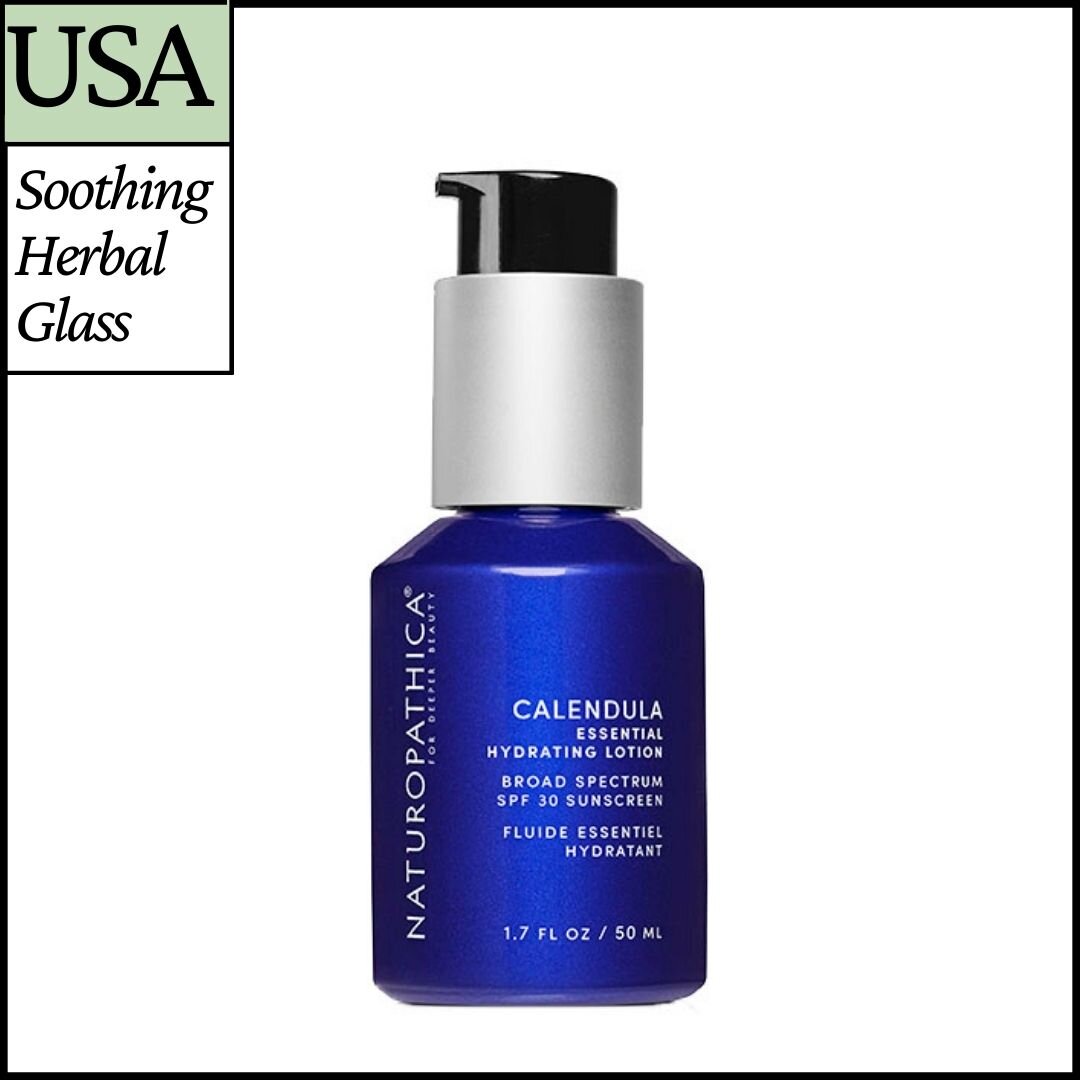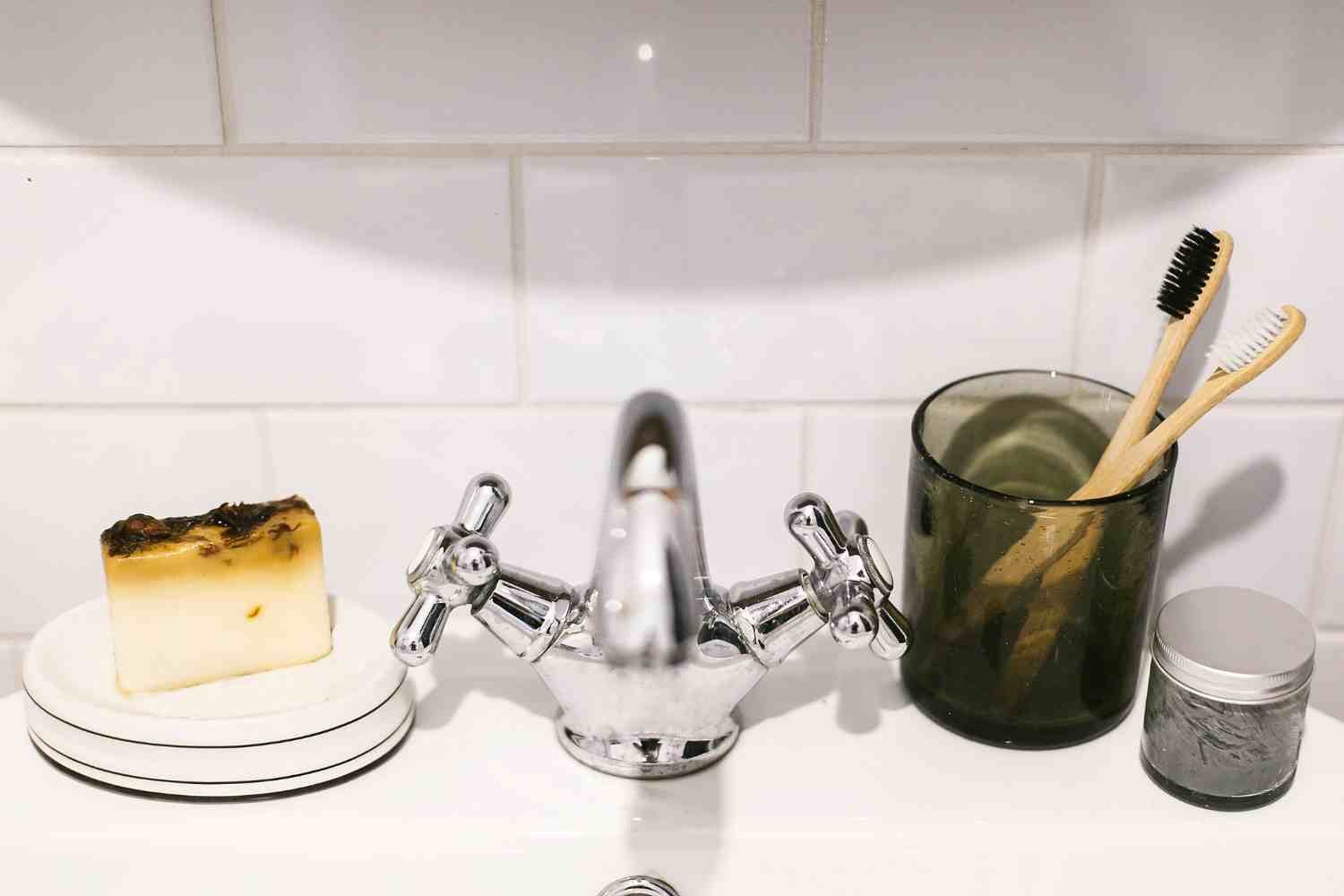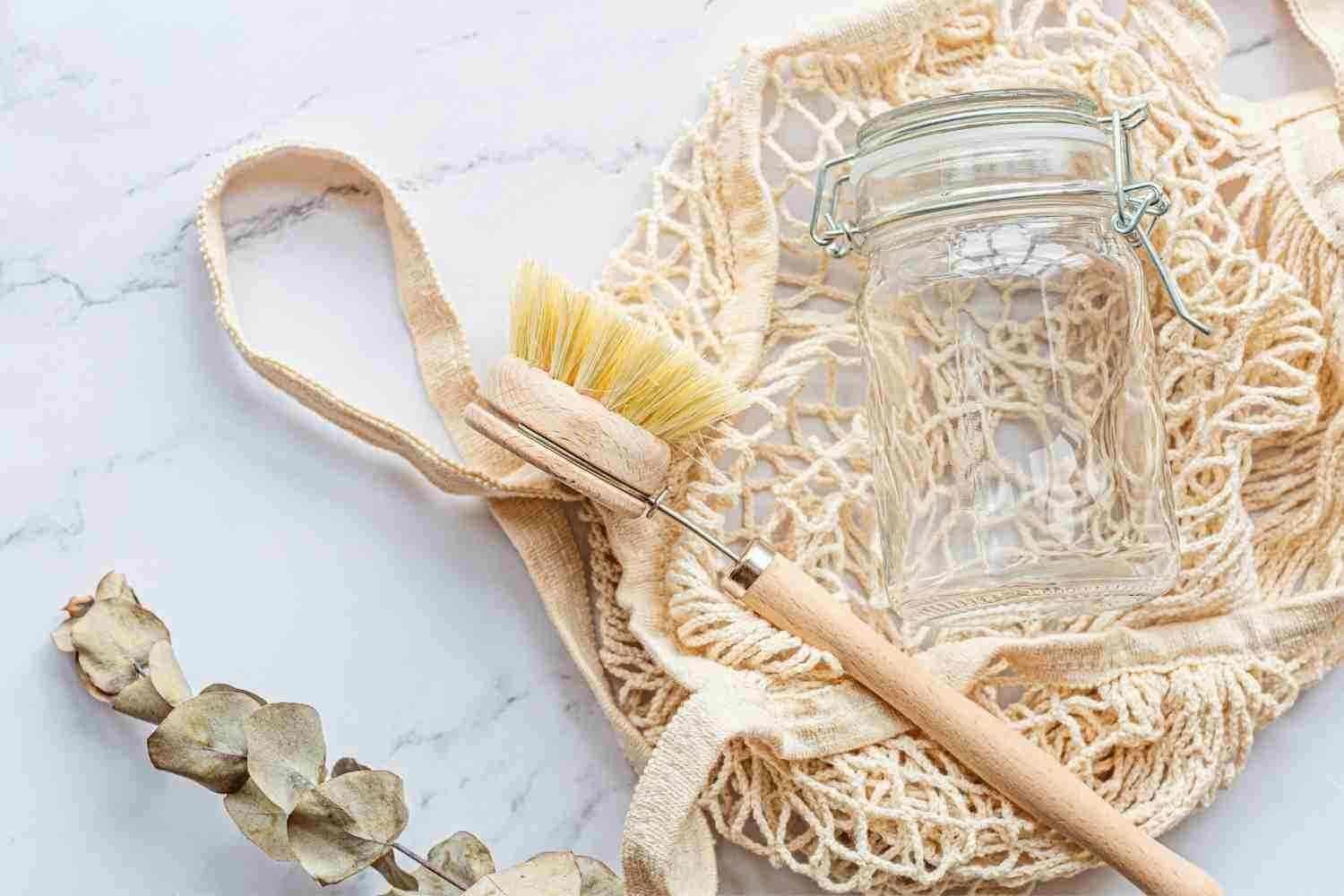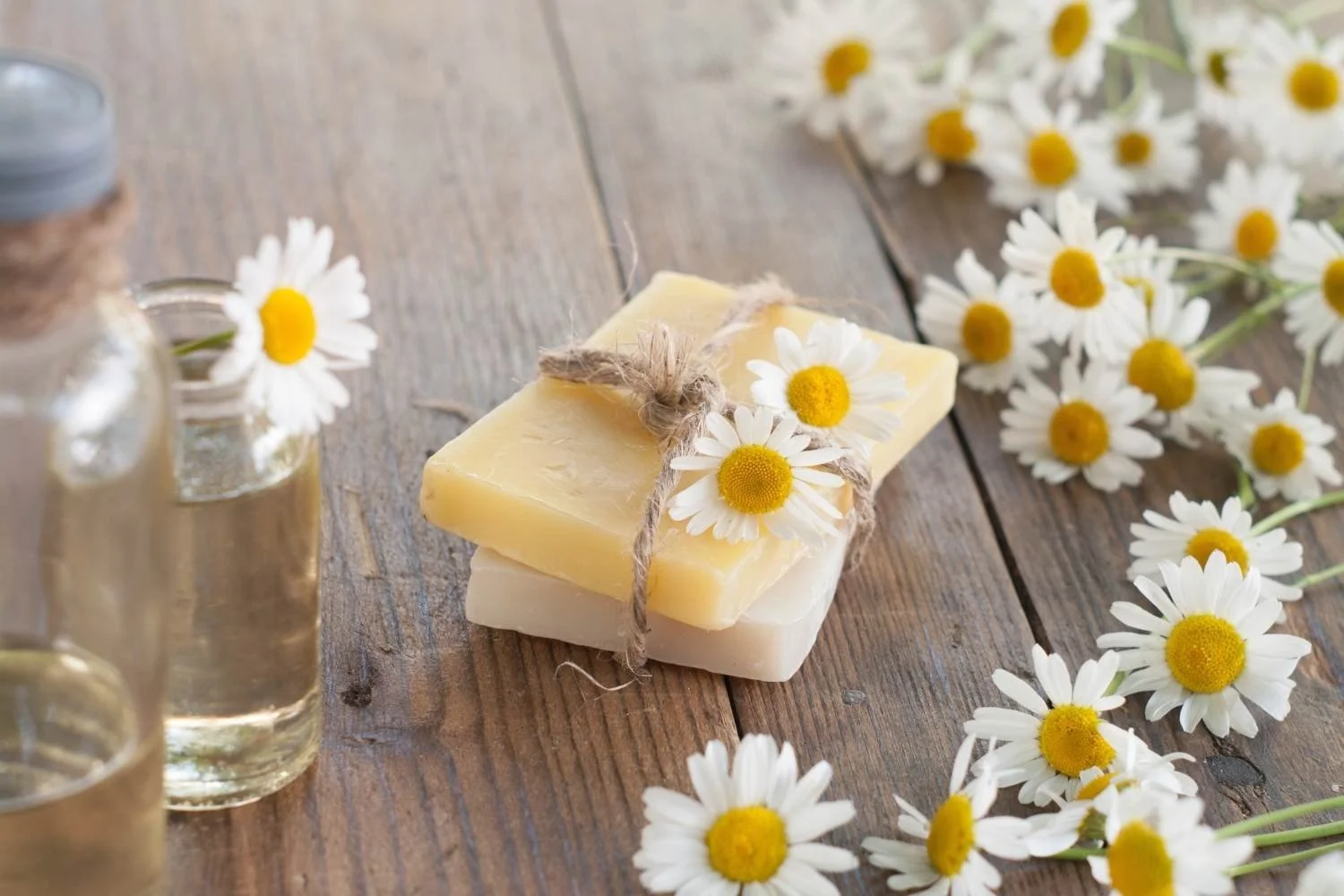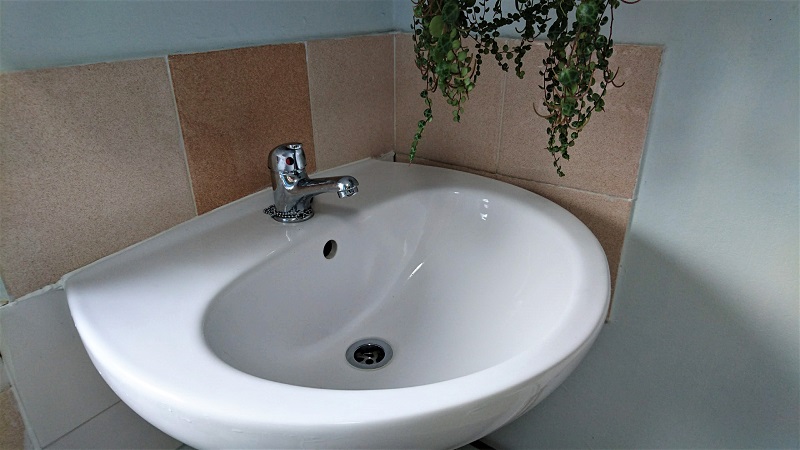Everything You Need To Know About Natural, Reef Safe Sunscreen
All you wanted was to lay in the sun after a rough year…
But your eco-friend said you’ll murder the ocean if your sunscreen isn’t “natural” and reef safe.
You looked at the bottle but couldn’t tell which chemicals and minerals are eco-friendly.
In fact, the ingredients are pure gibberish.
Nobody likes an eco know-it-all but your friend has a point - you like coral reefs and don’t want to use sunscreen that harms them.
And you certainly don’t want to rub toxic chemicals, like benzene, into your kid’s skin *shudders.*
So how do you know which sun creams are actually non-toxic and safe for fish?
Don’t you worry my friend, I’ve got you covered.
Tap to pin this to your sustainable Pinterest board:
In this guide, I am going to help you make an informed decision about which natural sunscreens tick your ethical boxes.
I’m going to give you the information you need to spot greenwashing - when a brand is not as eco-friendly as it claims.
Keep reading to learn which common UV ingredient is harmful to fish and for evidence-based information on the safety of UV chemical filters.
…Or you can just skip to the end and read summaries of my recommended brands in the UK and US.
Disclaimer:
I have spent a lot of time reading ingredients lists and scientific studies so I could work out which products use eco-friendly ingredients, however, I am not a scientist and this post should not be used to ignore medical advice. I have linked my sources in the text so you can do your own reading. Always wear sun cream to protect yourself from skin cancer.
Please note, this page contains affiliate links which means if you make a purchase through my link I will get a small commission for referring you (at no cost to you). I value the integrity of my website and will never be dishonest - all words on this entire site are my own true thoughts. I appreciate you using my links because this supports my website hosting fees and compensates me for the huge amount of time I spend researching.
You can also support my work by buying me a coffee or by sharing this page (there are links at the bottom of the page if you don’t fancy copying and pasting the URL). As a work at home mum to two smalls every comment and share means the world to me. <3
Let’s be friends! Tap the icon to follow me on social media:
My recommended buys:
Tap the image to view the products or for information about specific ethical values, like plastic-free and vegan, scroll to the end of this page.
Coming up
What are the different types of sunscreen?
What is reef-safe sun cream and is it regulated?
Is Ethylhexyl Methoxycinnamate (Octinoxate) reef safe?
What is Octocrylene and is it reef safe?
Is Octocrylene a health risk?
Official guidance on UV chemical filters & human health (FDA & EU)
Other controversial ingredients in sunscreen
Do UV chemicals in sun cream go down the drain?
What is a hybrid sunscreen?
- Green People and Tropic SkincareWhere can you buy mineral sunscreen without supporting Amazon?
>> Information about my recommended reef safe & eco-friendly sun care brands
1. What are The different types of sunscreen?
Let’s start with the basics. There are two types of sun cream - chemical sunscreen and mineral sunscreen.
Mineral sun cream acts as a shield; it covers the skin and deflects the sun's rays. Chemical sun cream sinks into your skin and has added ingredients to absorb UV light.
Both types of sunscreen are effective at reducing the risk of sunburn, skin cancer and damage to the skin.
Mineral sun cream
UV ingredients:
Zinc Oxide
Titanium Dioxide
Pros:
Mineral sunscreen doesn’t sink into your skin so it is less likely to clog pores, cause acne or cause sensitivity.
It deflects the heat away from your face which is useful for anyone prone to redness from the heat.
Cons:
It is thicker and harder to rub in - this can be a pain with fidgety children (I speak from experience)
Mineral sun cream is quite pale and can leave a white residue so some formulas are not suitable for people with Black or Brown skin.
Not all brands are transparent about using nanoparticles.
Chemical sun cream
UV ingredients:
Oxybenzone or Benzophenone-3
Octinoxate or Ethylhexyl Methoxycinnamate
Octocrylene
Avobenzone
Homosalate
Octisalate
Enzacamene or 4-MBC
Tinosorb (brand name)
Mexoryl (brand name)
There are more chemical filters than this, but these are the main ones I’ve come across.
Pros:
Chemical sunscreen is much nicer to apply to your skin. Various nourishing oils are added and a little goes a long way.
They are easier to apply to darker skin tones because they absorb into the skin rather than sit on top of it.
Cons:
Because chemical sun cream sinks into your skin, it is much more likely to clog pores and cause acne.
Some of the chemicals are harmful to fish and corals. There is also some concern over the lack of research in humans, particularly in relation to hormones.
There is also a higher chance of having an allergic reaction to the active ingredients themselves or the other added chemicals included in mainstream brands, like preservatives and fragrances.
2. What is reef-safe sun cream & is it regulated?
UV filters in sunscreen can cause viral infections in coral reefs, causing them to turn white (hence the name coral bleaching). (ref)
If a sun cream is labelled reef safe it should be free from chemicals known to damage coral reefs, but this doesn’t mean that it is. You need to be aware that the term “reef-safe” isn’t regulated in any country. I strongly advise you to check the ingredients so you know what to avoid.
The three main chemicals that have been found to be harmful to coral reefs and aquatic life are Oxybenzone, Octinoxate, Octocrylene (ref). In the EU and UK, they use different chemical names for the first two. Keep an eye out for Benzophenone-3 and Ethylhexyl Methoxycinnamate.
Some states in America have banned all three of these chemicals (some have banned many more), however, they are all still legal in Europe.
“As a breastfeeding mum, I avoid Octinoxate because it has been found in breastmilk. Since becoming aware of the different chemical names, I found a few sunscreens listed “Octinoxate-free” that still contained it, it was just under a different chemical name which is very sneaky.”
3. Is Ethylhexyl Methoxycinnamate (Octinoxate) reef safe?
Octinoxate is added to makeup and sun cream to protect your skin from damage caused by UVB rays. In the EU, it is usually called “Ethylhexyl Methoxycinnamate” on the ingredients list.
Not only is Ethylhexyl Methoxycinnamate not eco-friendly, but it has also recently been found to have weak oestrogenic activity, which means it can mimic the hormone oestrogen. This means it could possibly affect hormones in the body, however, there currently isn’t evidence to prove that it is unsafe.
As a breastfeeding mum, I avoid Octinoxate because it has been found in breastmilk. Since becoming aware of the different chemical names, I found a few “Octinoxate-free” brands that hide it under a different name in the ingredients which is very sneaky. I’m going to contact the brands to let them know their error before including them here.
People know to look out for Oxybenzene and Octinoxate but these names seem to be used in America. In the EU they can have several different names but usually, it is Ethylhexyl Methoxycinnamate
FURTHER READING: EU database, EWG,
WHAT TO LOOK FOR ON THE LABEL: Octinoxate, Octyl methoxycinnamate (OMC), Parsol MCX or MOX, Escalol, Ethylhexyl methoxycinnamate, Tinasorb
BRANDS USING ETHYLHEXYL METHOXYCINNAMATE:
The Body Shop
Toddle
In case you’ve not seen one, here is what a bleached coral looks like:
Photo by think4photop via Getty Images
4. What is Octocrylene and is it reef safe?
Octocrylene is a UVB filter included in many reef-safe sunscreens. It is used to stabilize the UVA filter avobenzone (also called butylmethoxydibenzoylmethane). Because it is so widely used, there is a huge amount of Octocrylene in rivers and seas. This is concerning because it has been found in adult fish and fish embryos.
While current research suggests Octocrylene is not an issue in the human food chain, it appears to affect the developing brain and liver of zebrafish (ref, ref2, ref3).
I couldn’t find any reliable information proving Octocrylene was harmful to coral reefs, however, it is widely found in fish and seafood and has been banned in multiple places that are trying to protect their oceans.
It might be reef-safe but it doesn’t appear to be the most sustainable choice for local wildlife.
For this reason, I personally choose not to buy sunscreen containing Octocrylene.
Unfortunately, many “natural” brands use Octocrylene in their products but at least this time it is listed by the same name.
5. Octocrylene - is there a health risk?
In 2021, new research has been published revealing octocrylene breaks down into a carcinogenic, hormone-disrupting substance called Benzophenone. While this sounds alarming, the European Union have concluded it is still safe for humans in the small quantities it is found in suncare products. You can read the EU’s opinion here.
My personal opinion (remember I am not a scientist) is that products should be proven to be safe first, rather than used until proven to be unsafe. Oxybenzene was only recently discovered to be damaging to coral reefs after all (and is still widely available in products on a global scale… sigh).
The other important factor to consider is the risk of skin cancer from the sun. If people feel frightened of “nasty” chemicals and stop wearing sun cream they are more likely to end up getting cancer.
I’m all about informed choice so you can read the study here and decide for yourself.
Eco-friendly or more“natural” brands that contain Octocrylene:
Gruum
Jason (only the chemical ones)
Aloe Pura Sun Lotion
Child’s farm
The Body Shop
Sun Bum
6. official guidance on UV Chemical Filters and human health
In 2019 and 2020, two studies revealed that the ingredients oxybenzone, octinoxate, octisalate, octocrylene, homosalate and avobenzone are all systemically absorbed into the body after a single use (Matta 2019, Matta 2020).
The FDA also found that UV chemicals could be detected in the blood weeks after application.
Because the level of absorption is higher than previously thought, the FDA removed 14 out of 16 substances from its GRASE list (generally recognised as safe and effective) until more research can prove they are definitely safe. This does not mean UV chemicals are harmful to humans - there is simply a lack of safety data.
While this information makes me feel unnerved, I feel it is important to provide context and inform you that just because something has been absorbed into your skin doesn’t automatically mean it is harmful. My anxiety comes from wanting to know every detail about what is going into my kid’s bodies, but that isn’t always rational or possible.
“The findings in these studies do not mean that the FDA has concluded that any of the ingredients tested are unsafe for use in sunscreens, nor does the FDA seeking further information indicate such. The agency’s proposed rule requested additional safety studies to fill in the current data gaps for these ingredients.”
The FDA advice is to continue using either chemical or mineral sun cream (although the AAP says to avoid using UV filters on children - just to be on the safe side).
Titanium dioxide and zinc oxide are now the only two on the GRASE list so if you’re concerned about the lack of research, non-nano mineral sunscreen is a safe option.
Europe:
None of the 14 UV chemicals is banned in Europe, even Oxybenzene, despite some American states banning all of them.
It appears America is being stricter (for once) because of the environmental impact of the UV chemicals, rather than potential health concerns.
It can be stressful deciding what products to use, especially when you care about the environment. I find it helpful to remember that health must come first. Not protecting your skin from the sun puts you at a high risk of developing skin cancer (which will definitely cause more waste).
A clownfish in a bleached sea anemone (photo by Leventkonuk - Getty images)
7. Other controversial ingredients found in sunscreen
While there is no scientific evidence that chemical filters in sunscreen are harmful to human health, there are plenty of other ingredients in them I personally avoid.
Microplastics
I was shocked to learn that microbeads and liquid microplastics are not banned in sunscreen, even in the UK (the microbeads ban was only in rinse-off products, like face washes).
Not only do I not want to rub plastic on my face, but I also do not want to financially support products that use petroleum-based ingredients. Petroleum is harvested through fracking which is devastating to the ocean - think of the oil spills that have happened.
You can use the free app Beat The Microbead to scan the ingredients list for hidden microplastics. If online shopping, you can scan the ingredients on a different device (like a laptop) using your phone camera.
Animal derivatives
While many vegan products contain microplastics, lots of natural or plastic-free brands use beeswax. Usually (well, hopefully!), this is ethically sourced and the company will have clearly labelled it and provided an adequate policy. When sourced sustainably, beeswax can have a positive impact on bees, however, unsustainable beekeeping is terribly cruel to bees and harmful to the environment.
Non-vegan sunscreen can also contain animal derivatives such as:
Stearic acid/stearin - comes from the fat of cows, pigs or sheep
Lanolin - comes from sheep wool, always check the product is certified cruelty-free
Collagen - sourced from the connective tissue of cows or fish
Chitin - crushed shells or skeletons of insects or crabs
Elastin - taken from lungs, intestines or artery walls.
The perfect sun cream is hard to find. For this reason, I’ve included some recommendations that contain sustainable beeswax by cruelty-free brands. That is the only non-vegan ingredient used in the sunscreens I’ve recommended and all of them are cruelty-free.
Nanoparticles
Due to the thick consistency of mineral sunscreens that make them harder to apply, brands started using smaller sized particles known as nanoparticles and measured in nanometers (nm). The benefit of this is that it removes the whiteness left behind when applying it, but this comes at a cost.
There are concerns that nanoparticles below 35nm are polluting the ocean and are potentially harmful to coral-reefs. As you may expect, research is lacking. They also don’t provide as good sun protection because they absorb into the body rather than act as a physical barrier. And just to make it even harder for consumers, companies don’t have to disclose whether their product contains mineral nanoparticles (ahh!) or any details about the size or shape.
Thankfully, most eco-friendly brands list their minerals as “non-nano” (or nano if they are honest and transparent) so that customers know their product is reef-safe.
There is no credible evidence that rubbing sunscreen on your skin is harmful to human health, but nanoparticles should be avoided in spray form as they are toxic to inhale.
Further reading on nanoparticles, research on nanoparticles
Preservatives
Preservatives are beneficial because they stop bacteria and fungi from growing in cosmetics, however, many are made from petroleum (fossil fuels) and can be irritating to the skin.
A lot of synthetic preservatives are controversial and have a bad reputation, like parabens and formaldehyde. Others, like Methylisothiazolinone (MIT), are sensitizing which means repeated use can cause allergies to develop. It was listed allergen of the year in 2013 yet it is widely used in all sorts of products, including sunscreen, makeup and cleaning products.
While there are a lot of synthetic preservatives I try to avoid because I have very sensitive skin, I wouldn’t recommend searching for preservative-free cosmetics (unless you want to risk rubbing bacteria on your face). There are some products t have been formulated so that they don’t need preservatives, for example, by removing water.
8. Do chemicals in sun cream go down the drain?
You may be thinking, I don’t even swim in the sea, do I need reef-safe sunscreen?
It’s a valid question that is asked all the time.
In the UK, the risk of ingredients getting to coral reefs is arguably much lower. However, more information is needed to show that UV filters aren’t harmful to the fish and aquatic life in British rivers and coastal water.
If you don’t go in the sea, the chemicals and nanoparticles in sun cream will get washed down the plug when you have a shower. It’s hard to know what chemicals water treatment centres can remove (they certainly weren’t designed for the vast quantities of chemicals we wash down our drains.
Either way, our corporate buddies at the privatised water companies aren’t doing a particularly good job. Illegal sewage dumping is a serious problem.
My water company recently got fined millions for neglecting to update their infrastructure and lying about it. This resulted in raw sewage being dumped into rivers and coastal areas for several years - ergh.
My water company isn’t the only one, or even the worst one. Check out the campaign by Surfers Against Sewage who are working hard to clean up seas.
9. What is a Hybrid sunscreen?
Some brands refer to their product as hybrid sun cream.
As I previously mentioned, there are more chemical filters available in Europe and some are considered safer. This has resulted in brands adding UV chemicals to their mineral sun creams to make them easier to apply.
Hybrids are ideal for anyone that can’t get on with mineral sun creams, for example, people with Black or Brown skin. It is a confusing area though so I’d recommend looking for green credentials (like COSMOS organic certification) when choosing a hybrid because they will not all be created equally and may still contain UV filters that are harmful to the coral reefs and fish.
Green People
Green People are an organic, cruelty-free brand that uses safer UV filters in their products.
I have a lot of respect for this certified organic company, but I’ve decided on this occasion to not include them in my list of recommendations.
The reason I haven’t included them is not because they have used chemical filters, but because they are using titanium dioxide nanoparticles.
While there is no evidence that nanoparticles in rub-on sun cream is harmful to health (lots of unreliable sources telling you it is on the internet though!), there is a very small amount of research that suggests it could be harmful to fish and marine life. As usual - there needs to be more research.
If you’re in the UK and you really don’t get on with mineral sunscreen then Green People would be my first recommendation for a brand with chemical filters in because they are transparent organic and trustworthy. The benefit of nanoparticles is that it rubs into your skin easier without leaving white streaks.
Please note, I am affiliated with Green People because they are one of my favourite ethical beauty companies - I love their makeup and skincare range.
Further reading - Why we use nanoparticles -Green People, Our Sun Safe Ingredients
Tropic Skincare
Tropic Skincare creates hybrid and mineral sunscreens.
I do not recommend supporting Tropic because they are a multilevel marketing company. Also called MLM, this secretive business model is well-known for exploiting vulnerable people. In my opinion, MLMs are legal pyramid schemes. The only way to earn a living wage in an MLM is to be successful at recruiting a network of people underneath you. Because of this, women either lose money, work really hard for no wages at all, or alienate their friends and family (source).
The sustainable living movement advocates for fair living wages in supply chains - as MLM consultants/distributors receive less than minimum wage, I do not recommend supporting Tropic Skincare.
Read more about my opinion on eco-friendly and natural MLMs here.
Other MLMS to avoid - Neals Yard Remedies, The Body Shop, Arbonne, Doterra, Forever Living, Wiki Aniko
10. Where can you buy mineral sunscreen without supporting amazon?
I know it can be convenient to shop at Amazon, but a big part of creating a sustainable future is supporting small businesses and local communities instead of greedy billionaires who get rich from exploiting (often marginalised) people.
Here’s a post I wrote called why are people boycotting Amazon?
To make it easier for you to browse different products, here are some ethical retailers that stock a variety of sustainable products, including mineral sunscreen:
Ethical Superstore (UK)
Planet Organic (UK)
Follain (US)
Natural Baby Company (US)
EarthHero (US)
My recommended eco-friendly & reef-safe sunscreen 2021
Odylique (UK)
Type: Mineral (non-nano).
Packaging: Widely recyclable plastic tube.
Manufactured: Handmade in a workshop in Sussex using renewable energy.
Certifications: Organic, Fairtrade, Cruelty-free
Vegan: yes
Microplastics: None (checked using BTMB app)
UV Ingredients: Zinc Oxide
Reviews: Odylique is the ideal brand for anyone looking for natural products or those with skin conditions, like eczema. Reviews are mostly great, the main criticism is that it is hard to get out of the tube. I have tried several Odylique products and they now one of my favourite sustainable beauty brands.
Products:
Organic mineral sunscreen (SPF30) £15 for 50ml
Use my affiliate code LAZY20 for 20% off your order.
Earth Mama (USA)
Type: Mineral
Packaging: Plastic tubes (pet which is widely recyclable)
Manufactured: Made in the US
Certifications: Organic, cruelty-free
Vegan: yes
Microplastics: none
UV Ingredients: Zinc oxide (non-nano)
Reviews: Earth Mama gets good reviews with women of different races and skin tones saying they are pleased with Lady Face. Positive reviews say they don’t need to wear foundation and combine the lighter and darker sticks, criticisms say it is very thick so it may not the best choice to do exercise in. The product is non-comedogenic.
Products:
Kids uber-sensitive SPF40 - $15.99
Lady Face tinted stick - 2 shades or set of 2 SPF40 - $14.99+
Baby face mineral sunscreen stick SPF40 - $9.99
Baby mineral lotion SPF40 - $14.99
Shade
Type: Mineral (non-nano)
Packaging: Metal tin
Manufactured: Made in the UK
Certifications: Organic
Vegan: No - contains beeswax
Microplastics: None - minimal ingredients
UV Ingredients: Zinc Oxide (non-nano)
Reviews: This is the sun cream I use. It is thick and needs a bit of extra rubbing in but I am happy with it. I am prone to dry, sensitive skin and have had no issues. I like the tin which lasts ages and can then be reused or recycled. Unfortunately, they only offer SPF25.
Products:
Shade All-Natural Sunscreen (SPF25) 15ml for £3.75 or 50ml for £9.75
Use my affiliate code LAZY15 to get 15% off Shade.
Suntribe
Type: Mineral
Packaging: Bio-based sugar cane tube or metal tin
Manufactured: Made in Sweden, shipped to a single location in the UK (and some other EU countries) to minimise transport emissions.
Certifications: COSMOS organic, cruelty-free
Vegan: no - contains organic beeswax
Microplastics: none
UV Ingredients:
non-nano zinc oxide
Reviews: Reviews are mostly positive, negative ones seem to focus on the price. The sunscreen in the tube is slightly tinted with cacao which sounds good, although I’m not a fan of the smell of cocoa butter so I don’t plan on trying it. Let me know in the comments if you have though! The other products appear to be aimed at water sports and performance so ideal if you’re swimming but may leave a white cast.
Products:
Hypoallergenic Face & Body SPF30 in tube - 100ml £22.99
Face & Sport (extreme performance) in metal tin - 45g £14.99
Sports Zinc Stick SPF30 - £14.99
Solara (US)
Type: Mineral
Packaging: Recyclable plastic
Manufactured: America
Certifications: Ecocert / COSMOS Organic, Cruelty-Free, EWG certified products
Vegan: Yes - all products
Microplastics: No (scanned with BTMB app)
UV Ingredients: Zinc oxide (non-nano)
Reviews: I’ve never tried this product, but feedback is excellent with more 5 star reviews than most other sunscreens. Solara uses a science-based combination of herbal, plant-based ingredients to heal and rejuvenate the skin whilst protecting it against UV rays. Reviews say that it does not leave a white residue on the skin.
Products:
Ageless Facial Sunscreen SPF30 Unscented - $42
Glow Getter Illuminating Sunscreen SPF30 - $32
All Good (US)
Type: Mineral (non-nano)
Packaging: Metal tins and bottles (plastic pumps can be sent back to EarthHero who recycle them through Terracycle)
Manufactured: Made in the USA
Certifications: Organic, B corp, Cruelty-free,
Vegan: no - contains beeswax
Microplastics: no (scanned with BTMB app)
UV Ingredients: Zinc oxide (non-nano)
Reviews: Reviews are generally great for this brand, one criticism for the butter is the size of the tin because a larger size isn’t available. The spray and family size have 5-star reviews. Some of the creams contain more aloe vera gel than oil which has led to mixed reviews in those with dry skin but great reviews for acne-prone skin. The tinted sun butter appears to be better for people with darker skin whereas the tinted cream works better for people with pale skin. All Good’s ethics are brilliant and their products are very natural, but Earth Mama looks like a safer choice for tinted options.
Products:
Sun Butter SPF50 - $9.99
Tinted Sun Butter SPF50 - $10.99
Sport Natural Sunscreen Spray SPF30 - $19.99
Sport Natural Sun Lotion (tube) SPF30 - $15.99
Tinted Zinc Sunscreen (tube) SPF30 - $19.99
Family Size Sport Zinc Sunscreen SPF30 - $49.99
Kid’s Natural Sunscreen Spray - SPF30 - $19.99
Disclaimer - I have previously worked alongside EarthHero, in a paid partnership to raise awareness of plastic pollution on Earth Day.
Sukin (AU, UK)
Type: Mineral (contains nanoparticles)
Packaging: Plastic
Manufactured: Made in Australia (Sukin are a carbon-neutral Australian company)
Certifications: Cruelty-free
Vegan: 100% vegan brand
Microplastics: None (scanned with BTMB app)
UV Ingredients: Zinc Oxide (nano)
Reviews: I haven’t tried this but reviews are really good. Sukin offers untinted and tinted options for the face. The main criticism is the smell, however, I do prefer products that don’t use synthetic fragrances. I usually wouldn’t recommend a brand with nanoparticles but I’ve included Sukin on my list to ensure their is a natural option for people of colour in the UK that has SPF30.
Products:
Facial tinted sunscreen (SPF30) light/medium 60ml £14.95
Facial tinted sunscreen (SPF30) medium/dark 60ml £14.95
Facial sunscreen (SPF30) untinted 60ml £14.95
Attitude (CA, UK)
Type: Mineral (non-nano)
Packaging: Some plastic-free stick options, others appear to be in plastic tubes.
Manufactured: Made in Canada.
Certifications: Peta cruelty-free, EWG verified, ECOLOGO
Vegan: Yes
Microplastics: None
UV Ingredients: Zinc Oxide
Reviews: Effective sunscreen, but a bit hard to rub in (as is the case with many zinc oxide sun creams). Lots of options available including fragrance-free and scented options. All ingredients and fragrances are naturally derived and clearly listed.
Products:
Sunscreen stick SPF30 - unscented
Sunscreen stick SPF30 - tropical
View all sunscreen by Attitude
Have you tried any mineral sunscreens? Which did you like and which didn’t you like? Let me know in the comments below.




